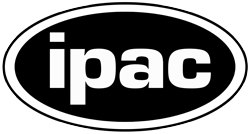NASA Euclid Team --- PI: A. Kashlinsky
Looking at Infrared Background Radiation Anisotropies with Euclid (LIBRAE)
LIBRAE will exploit planned Euclid imaging of both the Wide and Deep Survey regions at infrared and visible wavelengths in order to 1) measure the structure (fluctuations) of the source-subtracted Cosmic Infrared Background (CIB) out to scales of a few degrees with better than ~1% accuracy. With this we will be able to clearly distinguish the nature and parameters of the populations responsible for the production of the CIB fluctuations. 2) Determine the Lyman break, and epochs, of the populations producing these fluctuations by expanding the SED of the measured fluctuations from 3-5 micron to 0.5-5 micron. 3) cross-correlate the measured fluctuations with optical, IR, X-ray, and microwave imaging from a number of other facilities. These include both the Spitzer/IRAC and HST/WFC3+ACS instruments, to help characterize stellar (nucleosynthetic) sources of the CIB fluctuations. We will also cross-correlate with imaging from coextensive X-ray observed fields, in order to measure the contribution of black holes (AGN and other gravitation or accretion-powered sources) among these sources to the X-ray background. Cross-correlating the near-infrared Euclid CIB maps with Planck and other sub-mm CIB and CMB measurements will probe the dust emission from these sources and constrain any thermal SZ component contribution. LIBRAE will thus identify the net emissions from the first stars era, lead to a better understanding the condition of intergalactic medium at that epoch, isolate the contributions from the first black holes and shed light on dust content at those times.
The specific goals are:
- Measuring power spectrum of source-subtracted CIB fluctuations at near-IR with sub-percent statistical accuracy with the NISP Wide Survey.
- Probing epochs of sources producing the CIB fluctuations by cross-correlating with diffuse light from VIS Wide Survey
- Probing the CIB properties as function of depth from Deep Survey
- Determining the nature of the sources (black holes vs. stars) by cross-correlating with X-ray data assembled for this project and eROSITA
- Probing the condition of the IGM at pre-reionization by cross-correlating source-subtracted CIB from Wide Survey with multi-frequency all-sky CMB data.
- Probing history of emissions at 10<z<20 using the Lyman tomography
- Probing BAOs at 10<z<20 using the Lyman tomography
- Understanding diffuse foregrounds
Team Members:
A. Kashlinsky (SSAI/GSFC), PI
R.G. Arendt (UMBC/GSFC)
M. L. N. Ashby (CfA)
V. Bromm (UT, Austin)
N. Cappelluti (University of Miami)
G. Hasinger (UH, Honolulu)
A. Kaminsky (University of Miami)
J. Kruk (NASA/GSFC)
S. H. Moseley (NASA/GSFC)
Students (K. Helgason 2013-2015, Y. Li 2015 - present)
Collaborators:
M. Andersen (Copenhagen, Denmark)
F. Atrio-Barandela (Salamanca, Spain)
A. Ferrara (Pisa, Italy)
A. Finoguenov (MPA and Helsinki)
R. Genova-Santos (Tenerife, Spain)
K. Helgason (MPA, Germany)
R. Scaramella (Rome, Italy)
